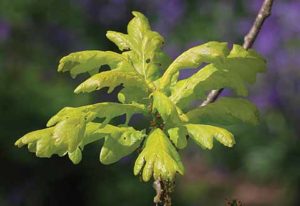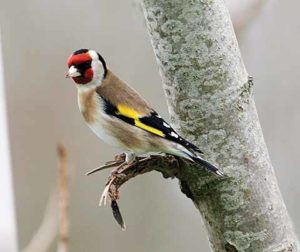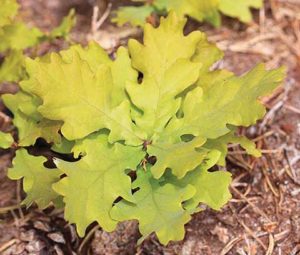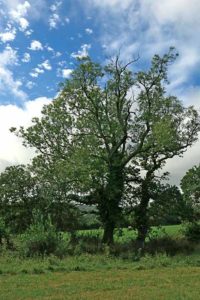Spring is sprung
Sally Welbourn greets the arrival of spring in its most visible form
Published in March ’18
Nothing holds more promise in life than the first glimpse of a green leaf forming on the branch of a tree. Whether you are a wildlife expert or not, you cannot fail to notice that as the short, cold and dark winter days disappear, trees will burst into life with the longer, warmer and brighter days of spring. Our trees, and as a result our landscape, have been brown and bare for what feels like an eternity, and as March approaches, we are more than ready to get some colour back in our gardens and other wild spaces in Dorset.
400 million years in existence, trees have long been a source of mystery and intrigue as the subject of magical tales from children’s books, such as Enid Blyton’s The Faraway Tree or, more recently, the Whomping Willow in the Harry Potter books by JK Rowling. The colours and shapes they produce have been a subject in literature, poetry and art. Their ability to change colour and form while still remaining present in the landscape, following the same cycle each year, has fascinated humans over the centuries.
So how many colours and shapes can be found in a leaf? The answer, of course, is many, and it is often dependent on the type of tree a leaf comes from. To produce spring’s hopeful green colours, trees must first shed their leaves in their seasonal cycle, resulting in a myriad of colours including red, orange, brown, blue, purple and everything in between, starting in autumn. The science we learnt in school tells us the reason for these changes is photosynthesis, which in Greek means ‘putting together with light’. Powered by sunshine, the water and carbon dioxide create the chlorophyll needed to produce a lush, green leaf. If the light is absent, then the leaf will change colour, allowing the chemical changes creating new pigments of red and orange to become visible in autumn.
On a rainy spring or summer’s day, leaves can look stunning, with water droplets balancing on their edges, dripping off gradually, but leaves do not take water through their pores, rather they actually evaporate large amounts of water from their leaves instead. The evaporation of water from the pores in the leaves provides the suction necessary to draw water up from the roots, thus maintaining the trees’ vital functions. In some cases, drops of water on the leaf’s surface can be harmful by concentrating direct sunlight and thus causing scorching.
Coming to life in the spring and shutting down in winter is what gives a tree its ‘rings’; the whiter parts of a cross section of the trunk are created in spring and early summer, and the darker wood created in the autumn and winter. By counting these rings, it is possible to estimate the age of the tree – a veteran or ancient tree in Dorset could be many hundreds of years old.
One of the first signs of spring from our trees is the male hazel catkin (nicknamed ‘lambs-tails’), which can be seen flowering as early as February. The female catkins are tiny and red, catching the pollen in the wind to develop a hazelnut. The hazel leaves will follow in April and May, and are recognisable by their almost circular, toothed shape, which has soft hairs on the underside and is, of course, lush green in colour. Hazel has a long connection to Dorset, is common throughout the county and has been used for various products in the past, including charcoal and hurdles, as described in Thomas Hardy’s Woodlanders. Dorset Wildlife Trust’s nature reserves, Powerstock Common and Ashley Wood, are important sites
for hazel.
The iconic native beech tree has a particular stronghold in the south of Britain, towering in woodland tall and broad, turning a shining golden brown in autumn. In Dorset, beech is thought to be native in only a few locations and for the most part is thought to be an introduced species to the county. Its young leaves are lime green, turning to darker green with age, and are soft and oval in shape. Beech trees are often associated with femininity and named the queen of the woodland, with the oak the king. The best-known ‘beech avenue’ is at Kingston Lacy near Wimborne.
The mighty oak tree – arguably the most well-known tree – is quintessentially English, and something of a national emblem. In Dorset the vast majority of veteran or ancient trees are oaks. Oak is one of the most abundant native tree species in woodland because it was favoured by woodsmen for timber for building ships (the ‘wooden walls’ of Nelson’s Navy) and houses, and therefore selectively planted or retained by foresters. The leaf growth occurs in mid-May and the leaves are characterised by growing in ‘bunches’. Both people and wildlife have benefitted from this wonderful tree – its autumnal acorns being used by the latter to store away for the long winter months.
As the trees grow, becoming greener and thicker with leaves, wildlife finds them more and more useful. For a keen photographer or bird enthusiast, trees in winter provide an undisturbed view, whereas in the summer you’ll need to look a bit closer to see some wildlife activity. The benefits for wildlife in trees are overwhelming, providing a home, shelter and food – everything needed to live in one place! From the birds living in the top branches, to the lichen and moss growing at the toe, the dormice enjoying the hazel nuts on the woodland floor and the flowers providing pollen for bees, a large tree can ensure the survival of our most beloved wild creatures on many levels of the food chain, including the smaller, perhaps over-looked wildlife, such as invertebrates, beetles
and flies.
For everything we see above the ground, there is much happening underground. Trees have a very important relationship with ‘mycorrhizal fungi’, also known as the ‘food gatherers’. This is an example where the tree and fungi both benefit from one another. Mycorrhizal fungi live underground and take some of the carbohydrates from the tree’s rooting system. In return for this, the fungus gathers nutrients and water for the tree to help boost mineral and drink supplies, helping the tree to withstand the stress of drought and preventing some soil-borne pathogens from entering the tree’s roots.
Dorset is an exceptional county for bats, having all seventeen breeding species present. Whilst they roost in a variety of places, some favour the holes in trees, to other, more typical habitats. The Barbastelle is known to use hollow trees for both winter roosts and nursery roosts, and the Noctule bat is predominately a tree-dwelling species and has been recorded in many parts of the county.
Hollows and interesting shapes can be found in ancient trees, but also in younger ones if they have been exposed to storms, fires or even lightning strikes. For wildlife, imperfections on a tree are most welcome as loose bark and cracks are ideal places for insects to live. You may even see a treecreeper (the name is no coincidence) scuttling up and down a tree, looking for insects, starting at the bottom with the rich part of
the trunk.
Trees are the most important organisms for life on earth, providing food for animals and clean air for humans, and that’s just for starters. This spring, if you have a tree near you, perhaps observe its changes a little closer, look at the wildlife flitting in, out of, up and over it, and take some time to appreciate these magnificent beings – as it’s so easy to forget.
Dorset Wildlife Trust has lots of woodland nature reserves waiting to be explored this spring, such as Bracketts Coppice, Ashley Wood, and Powerstock. For a list of DWT nature reserves, visit
www.dorsetwildlifetrust.org.uk/reserves.






